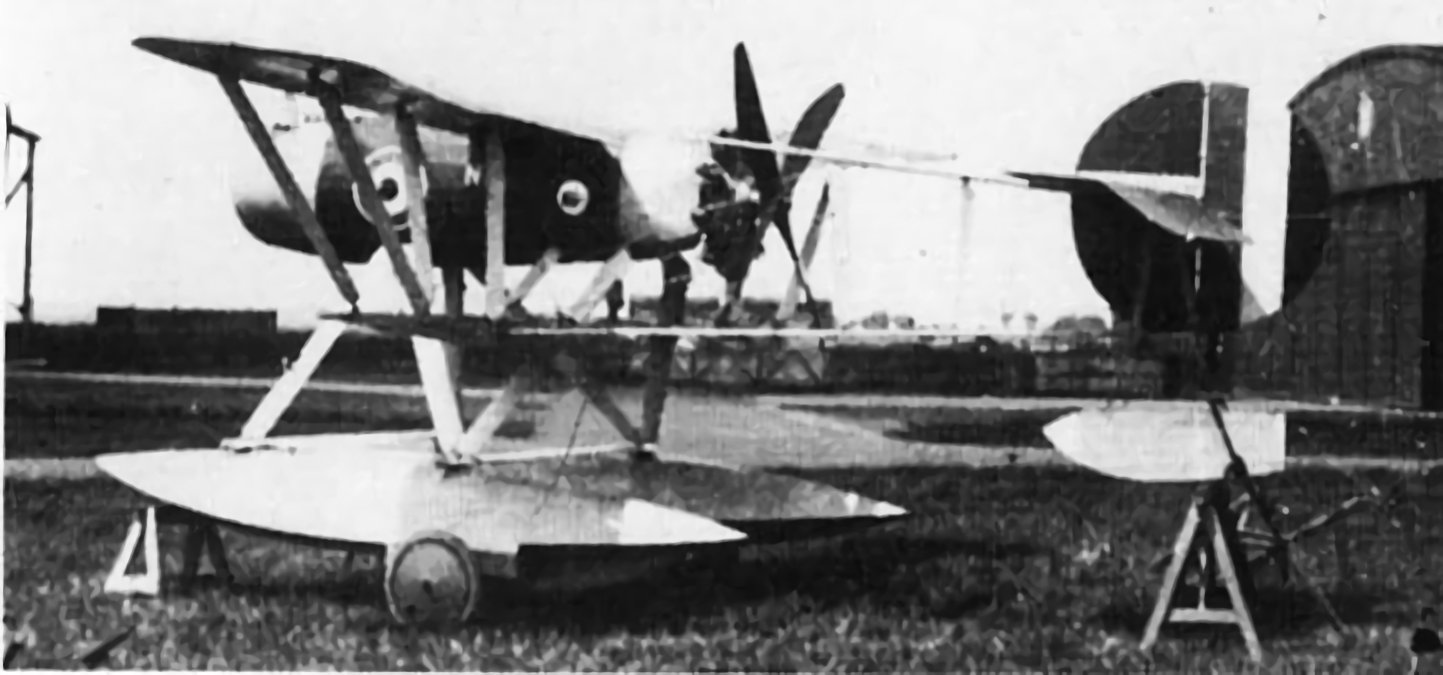Port Victoria P.V.4
In early 1916, the Port Victoria Marine Experimental Aircraft Depot designed a two-seat pusher configuration landplane fighter aircraft, (possibly designated the P.V.3). Although this was not built, Port Victoria was ordered to build a floatplane derivative for reconnaissance operations, being required to carry a Lewis gun and radio and to have an endurance of eight hours. The resultant aircraft, the Port Victoria P.V.4, had sesquiplane wings and a small streamlined nacelle for the two crew, which was attached to the upper wing. It was to be powered by a 150 hp (112 kW) Smith Static radial engine, an experimental engine which, while light, promised excellent fuel economy.
While the airframe of the prototype was completed during the autumn of 1916, the promised engine never appeared. When this became apparent a 110 hp (82 kW) Clerget rotary engine was fitted, allowing the P.V.4 to undergo testing in June 1917. The Clerget was longer than the Smith Static, however, which meant that the aircraft could not be rigged to be stable both at full power and with power off, with longitudinal control being lost at below 63 mph (101 km/h). As pusher aircraft were now considered obsolete, no further development took place
Port Victoria Marine Experimental Aircraft Depot
The British Royal Naval Air Service established an R.N. Aeroplane Repair Depot on the Isle of Grain on the River Medway Estuary in Kent in early 1915. As there was already a RNAS seaplane base on the Isle of Grain, the Depot was named Port Victoria, after the nearby railway station. It became the Marine Aircraft Experimental Depot.
It was renamed Marine and Armament Experimental Establishment on 16 March 1920 in recognition of the fact that weapons and other equipment were evaluated as well as complete aircraft. It was renamed again on 1 March 1924 to the Marine Aircraft Experimental Establishment and eventually moved to Felixstowe.

